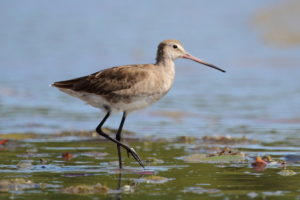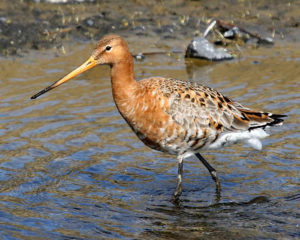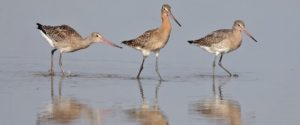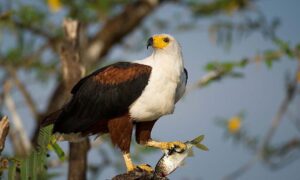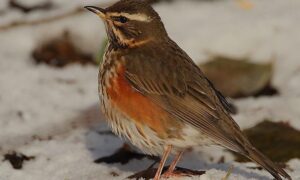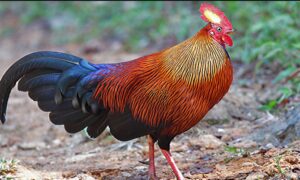The national bird of Netherlands is Black-tailed Godwit (Limosa limosa). Species of aquatic bird of shallow lagoons and stubble of rice of the family Scolopacidae. It is one of the largest and most colorful European waders, colorful in flight, with long legs and thin orange beak at its base and black at the end.
Netherlands National Bird
The national bird of Netherlands With a length of about 30 to 45 cm and an approximate weight of about 500 grams, coming to live about 15 years. It is one of the largest and most striking European waders, aesthetically strikingly colorful in flight, and with long characteristic legs.
His voice is noisy. It nests in small depressions on the ground, among the vegetation. He puts three or four eggs in a clutch, from May to July. It feeds on worms, mollusks and seeds, which it captures in shallow waters.
During the nuptial period show reddish brown head, neck and chest. Listed dark brown, white eyebrow and black eye list. Brownish back, with gray, ocher, reddish and black tonalities. The national bird of Netherlands in the lower parts, from the chest to the middle of the abdomen, you can see a brown barrel that gradually fades to white. In flight you can see a wide white wing band, dark obispillo and white tail with a broad terminal black band. Straight beak, black and with orange base. Dark legs.
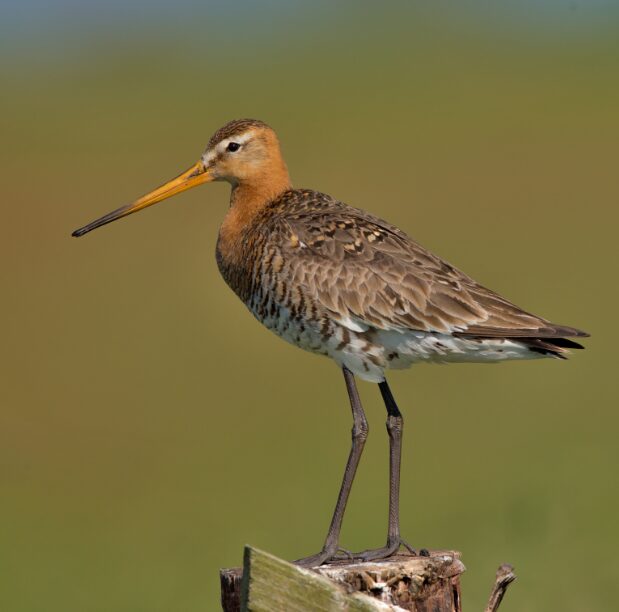
The female is similar to the male, but has a less reddish chest and the barrel of the abdomen is less noticeable. In winter the plumage is practically uniform gray, lighter in the abdomen and ocher in the chest. The wing and tail black and white are the main features to differentiate this species in winter.
It nests in humid continental areas, generally in shallow waters of marshes, lakes, grasslands, marshes, etc. In winter and migratory steps in similar habitats, but also on the coast (beaches, muds, deltas, coastal marshes) and agricultural crops (soaked irrigation). Very frequent in the irrigation of Las Vegas del Guadiana, mainly in prenuptial step.
Interesting Facts about Black-tailed Godwit
Reproduction
It breeds in Iceland, points of the British Isles and from the Netherlands by the coast of the North seas and [[Baltic Sea], reaching Russia. They also breed some in limited points on the French Atlantic coast. In Iberia has been discovered nesting in the Delta of the Ebro (Island of Buda).
[table caption=”Black-tailed Godwit Features” width=”500″]
No.,Features,Measures,
1,National Bird,Netherlands
2,Family,Scolopacidae
3,Wingspan,70–82 cm (28–32 in)
4,Phylum,Chordate
5,Mass Male,280 g (9.9 oz)
6,Mass Female,340 g (12 oz).
7,Body Length,1.8 – 2.3 ft.
[/table]
The Colinegra Needle usually nests in colonies established in marshes and wetlands. The nest is built with grass and the laying is usually four yellow-greenish pyriform eggs with brown and brown spots, which both adults incubate alternately for twenty-four days. After hatching they will continue to care for the chickens for another month.
Range
World: Nests in middle latitudes of Europe and Asia, with some couples in the British Isles and France, being the essence of its population in the Netherlands and Germany.
Do you know Himalayan Monal is the national bird of Nepal?
Spain: Sporadic nesting with very few breeding dates in the last 20 years: Delta del Ebro, Valencia. In step and winter, abundant, both in the coasts and in some areas of the interior. More rare in the Cantabrian coast in winter. Atlantic coasts and Andalusia with the highest concentrations. The Mediterranean coasts with more scarcity, with the exception of the Delta of the Ebro. Extremadura very abundant in the steps. In the Balearic Islands, a small migrant with exceptional wintering. In the Canary Islands, relatively abundant in passage and wintering very scarce.
Size of the population
In migration an abundant bird is produced. In winter, a population of about 21,600 birds is estimated (approximately 40% of the wintering population of Western Europe). Almost 50% is concentrated in Andalusia, 9% in Catalonia (Ebro Delta). In Western Andalusia congregations of up to 20,000 birds have been cited. In Extremadura, up to 2,600 birds in winter. In the north, smaller internal numbers and in small flocks.
Other names
The Black-tailed Godwit (Limosa limosa) is known in other regions of Spain and other countries as:
Catalonia (Spain): Tetol cuanegre
Galicia (Spain): Agulla colinegra
Basque Country (Spain): Kuliska buztanbeltz
Germany: Uferschnepfe
France: Barge à queue noire
Netherlands: Grutto
England: Black-tailed Godwit
Italy: Pittima reale
Poland : Ricky, Salami rick
Turkey : Camur Cullugu
Black-tailed Godwit Picture
